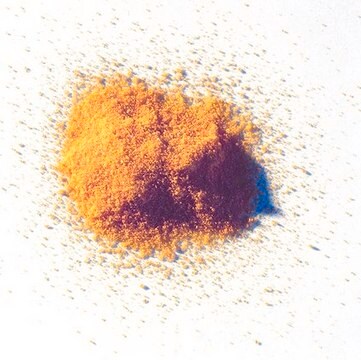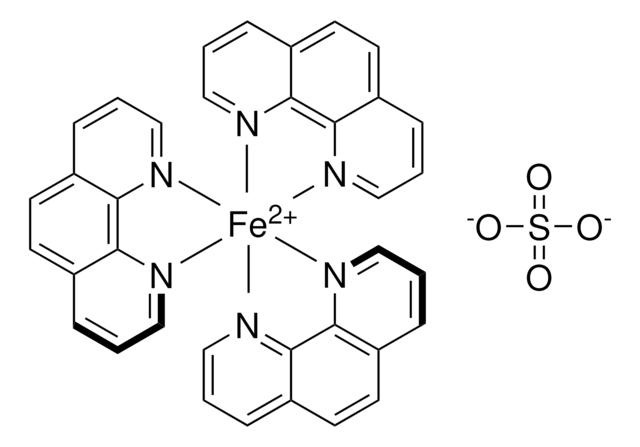Wichtige Dokumente
229547
Ammoniumcer(IV)-nitrat
≥99.99% trace metals basis
Synonym(e):
Cer(IV)-ammoniumnitrat
About This Item
Empfohlene Produkte
Qualität
for analytical purposes
Qualitätsniveau
Assay
≥99.99% trace metals basis
Form
crystalline
Eignung der Reaktion
reagent type: oxidant
Verunreinigungen
≤100.0 ppm Trace Metal Analysis
SMILES String
N.N.[Ce+4].O[N+]([O-])=O.O[N+]([O-])=O.[O-][N+]([O-])=O.[O-][N+]([O-])=O.[O-][N+]([O-])=O.[O-][N+]([O-])=O
InChI
1S/Ce.2HNO3.4NO3.2H3N/c;6*2-1(3)4;;/h;2*(H,2,3,4);;;;;2*1H3/q+4;;;4*-1;;
InChIKey
WIBGOERAEYJBOT-UHFFFAOYSA-N
Suchen Sie nach ähnlichen Produkten? Aufrufen Leitfaden zum Produktvergleich
Verwandte Kategorien
Anwendung
Signalwort
Danger
Gefahreneinstufungen
Acute Tox. 4 Oral - Aquatic Acute 1 - Aquatic Chronic 1 - Eye Dam. 1 - Met. Corr. 1 - Ox. Sol. 2 - Skin Corr. 1B - Skin Sens. 1A
Lagerklassenschlüssel
5.1B - Oxidizing hazardous materials
WGK
WGK 3
Persönliche Schutzausrüstung
Eyeshields, Gloves, type P3 (EN 143) respirator cartridges
Hier finden Sie alle aktuellen Versionen:
Besitzen Sie dieses Produkt bereits?
In der Dokumentenbibliothek finden Sie die Dokumentation zu den Produkten, die Sie kürzlich erworben haben.
Kunden haben sich ebenfalls angesehen
Artikel
Oxidation and reduction reactions are some of the most common transformations encountered in organic synthesis
The rare earth elements impact nearly everyone in the world. All of the people living in advanced technological countries and almost all those living in third world countries utilize the rare earths in their everyday living—the car that one drives (gasoline is refined from oil using rare earth catalysts and catalytic converters reduce the polluting emissions from the automotive exhaust), watching the news on TV (the red and green colors in TV screens), the telephones and computers we use to communicate (the permanent magnets in speakers and disc drives), just to name a few examples.
Unser Team von Wissenschaftlern verfügt über Erfahrung in allen Forschungsbereichen einschließlich Life Science, Materialwissenschaften, chemischer Synthese, Chromatographie, Analytik und vielen mehr..
Setzen Sie sich mit dem technischen Dienst in Verbindung.













